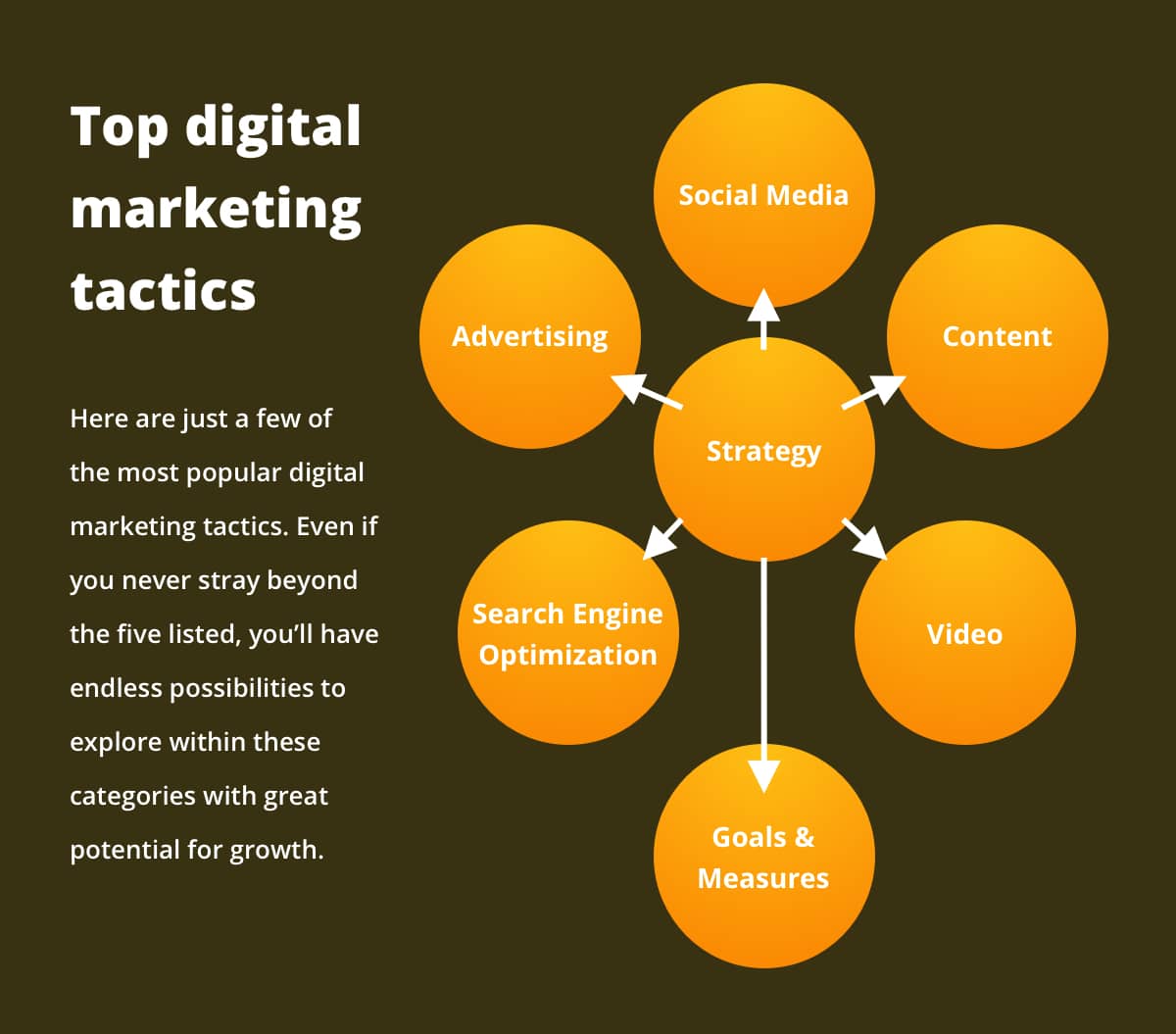
At first glance, digital marketing can look and feel like an overwhelming task. With so many options out there, and so much fierce competition, it’s easy to feel like your head is spinning and you don’t know where to start.
As with any other challenge, the best way to approach digital marketing is to create a detailed and thorough plan. Once you have an appropriate digital marketing plan in place, you can then set out to check on the steps within that plan, one by one, until you start to see results. We aren’t saying it will be easy, but things won’t be as scary once you have a good plan as your foundation.
This article is all about helping you through the digital marketing planning process. Don’t be afraid to invest some significant time and effort into your marketing plan/strategy, as it could continue to pay off for years to come once it is finished.
Know the Options
If you are truly new to digital marketing, one of the first steps in making a plan is to know exactly what forms of marketing are available online. Most likely, you won’t wind up using all of them, but it’s important to know your options so you can pick and choose what makes sense for your needs (and budget – more on that later).

As a starting point, the list below highlights some of the most popular digital marketing techniques on the web. This is just a very quick introduction, and you’ll need to dive deeper into any of these options that you plan on implementing.
- Pay-per-click ads. Commonly referred to as PPC ads, this form of advertising is exactly as it sounds – you pay a certain price each time a user clicks on one of your ads. The appeal here is that you only spend money when you actually get a visitor to come to your site. PPC ad campaigns are free to set up and run – the only expense that is incurred is when you secure a click. That means if your landing pages are doing a good job of converting visitors into customers, you could quickly find yourself with a profitable campaign on your hands. As you might imagine, competition is fierce in this space, so it rarely works out as easily in practice as it does in theory.
- Social media activity. Running active social media accounts for your business is a great way to engage with your audience and spread the word about what you have to offer. And, since it’s free to use social media platforms, all that you will need to spend here is time and effort. Social media is flooded with businesses trying to get attention, however, so it’s going to take creativity and persistence to stand out from the crowd.
- Search engine optimization. This is often where people will start when making a digital marketing plan. Search engine optimization is almost always referred to as SEO in the online world, and SEO is a powerful way to build traffic to your site. It is another “free” option in the sense that you don’t have to pay when someone finds your site through an organic search, but there are plenty of costs associated with doing the work of getting your site to rank highly for competitive search terms.
- Video marketing. More and more companies are turning to video marketing as an effective way to communicate their message to an audience. This might be done through YouTube, but it can be done in plenty of other places, as well. Good video will not only present products or services to your audience, but it will give your brand a personality, as well.
- Content marketing. This is a big part of SEO, but we wanted to break it out because it’s such an important strategy. Content marketing involves creating content that is valuable to your potential customers to give away for free as a lead generation tool. So, you might write blog posts that answer common questions in your industry, and those posts could become popular and help new people find your brand.
That’s only five potential digital marketing tactics to work into your overall strategy, and there are plenty of others. Even if you never stray beyond the five listed above, you’ll have endless possibilities to explore within these categories with great potential for growth.
Start with Detailed Research

Digital marketing doesn’t take place in a vacuum. You are entering a market that already exists in some form or fashion, so you need to figure out what is going on in that market and then build a plan around that reality. Some businesses make the mistake of ignoring the existing competition and market conditions because they are afraid to face the situation for what it is. Don’t shy away from the challenge – research it thoroughly so you understand what you face and then start to build a plan that can rise to the occasion.
As a starting point, do some searches online using the names of your competitors and their products. Where do they pop up? What kinds of ads are they running? There is a good chance that the other businesses in your market have already tested out various marketing channels and have seen first-hand what will work in your niche. If you notice that no one in your niche is using a specific type of digital marketing, it’s probably not that they are missing a big opportunity. More likely, they already tried it and it didn’t work out. Learn from their experience and avoid wasting time and money on methods that are unlikely to pay off.
Understand Your Target Market
One of the keys to successful marketing is knowing who you are selling to and where you can find those people. If you have been in business for any length of time already, you might have at least some idea of who is interested in what you offer. This will vary depending on if you are selling directly to consumers or if you are selling to other businesses.
In the case of B2B sales, you’ll need to think about what type of business you need to target before figuring out how to get in front of those people online.
What’s Your Selling Proposition?

What it really all comes down to is your offer. What do you have to sell? And why should they be interested? This is commonly referred to as your unique selling proposition, or USP. It’s important to clearly define this, as if you aren’t exactly sure why someone should make a purchase, your potential customers won’t be sure, either.
There are plenty of different ways to position your USP in the market. Some businesses, for example, will be positioned solely on price. They are offering a product that is very similar – or even identical – to others on the market, but they are selling at the lowest available price. The opposite approach would be to sell on quality instead of price. You might come in with one of the highest prices in the market, but you are proud of the quality put into the product and are counting on a portion of the potential buyers to value that quality enough to spend the extra money.
The main point that needs to be remembered here is clarity. You should be perfectly clear on what the selling proposition is, and then you can use that to focus your marketing materials on positioning your product or service correctly compared to the competition. Leave no doubt in the minds of potential customers as to what you offer and they’ll be more likely to make a purchase if you solve their problem.
Create a Digital Marketing Budget
There are plenty of ways to engage in digital marketing on a tight budget, but you’ll generally get faster results if you are able to invest in the process. So, it’s a good idea to start out with a budget that you can dedicate to your various digital marketing endeavors – in fact, knowing your budget will help determine what kinds of marketing you can do and what you should save for later when your budget is bigger.
It’s best to start by thinking about your budget on a monthly basis. So, for the sake of an example, let’s imagine that you have $1,000 to spend each month on digital marketing. You’ll probably want to divide that budget up into different categories, so you don’t spend it all in one place. It’s best to explore a few different areas so you can see what works and what doesn’t, and then invest more heavily in the channels that are performing.
With $1,000, you might decide that you are going to spend $700 on paying a writer to create quality content, while the other $300 goes to PPC ads. With $300 for the month, you could set a daily budget limit on your PPC campaign of $10 per day. That’s not a big budget, to be sure, but it’s enough to test the waters and figure out if you should invest more in those ads or look for better results in other places.
Implement and Adapt
If you have done any kind of marketing work previously, you already know that testing is an ongoing part of optimizing your results. There is no marketing campaign that you can just put in place and leave alone for months or years while it runs. Well, you could do that, but it would be a mistake. To get great results, you need to continually monitor your results and make adjustments to work toward greater and greater outcomes.
Toward that end, it’s a good idea to just get something up and running once you have an initial plan in place. It doesn’t matter if it isn’t perfect – in fact, it won’t be perfect, so don’t worry about it. Get close to the target and put something out there for the world to see. That’s the only way to gather data and learn what you need to improve.
Some digital marketing techniques offer the potential for quick results, while others will take a long time to bear fruit. Either way, one thing is constant – success in this arena takes hard work, persistence, and attention to detail. Building a great plan is the first step on that journey, so get started today. We hope this helps and good luck!
Most Popular Articles

Seeing Favicons in Your Google Search Results? Here’s Why…
Have you noticed anything different in your Google Search results lately? Google added tiny favicon icons to its organic search results in January. It was…

Business Growth and Digital Marketing News & Tips 11-17-24
Are you encouraging and rewarding innovation? Lee Cockerell is the former Executive Vice President of Operations at Walt Disney World. A lover of traditional red…

Business Growth and Digital Marketing News & Tips 11-27-24
A culture of gratitude "Feeling gratitude and not expressing it is like wrapping a present and not giving it." – William Arthur Ward Beyond being…








